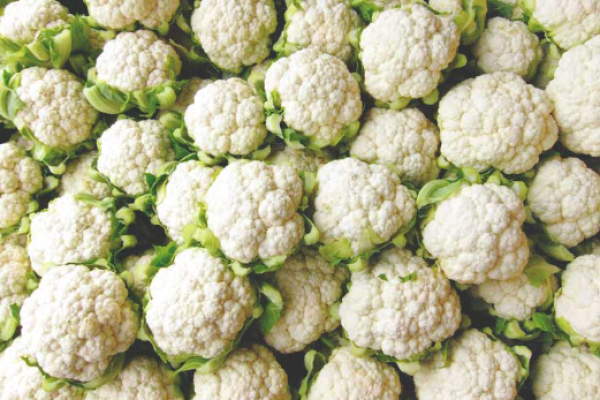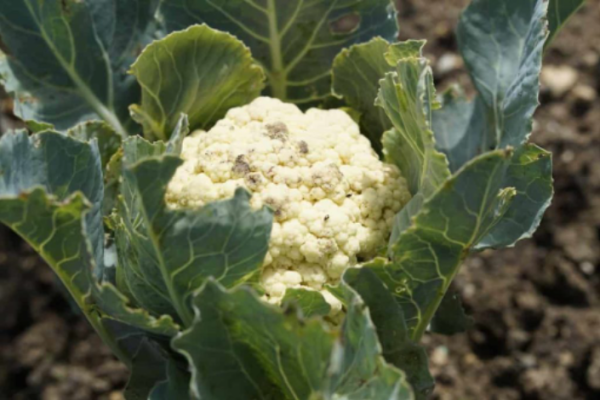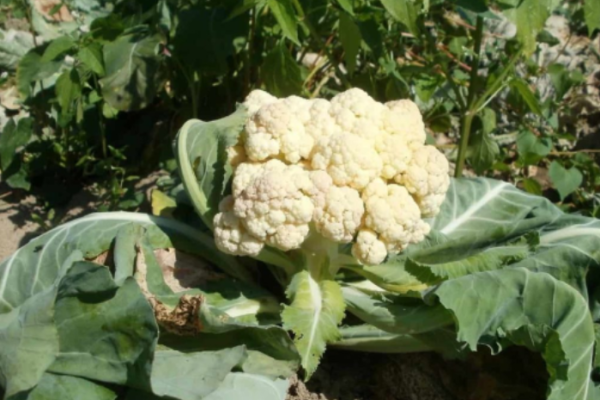19 Common Cauliflower Plant Problems: How to Fix Them, Solutions, and Treatment
19 Common Cauliflower Plant Problems: How to Fix Them, Solutions, and Treatment

Cauliflower is grown like Cabbage, although it is more focused. Cauliflower plants produce nutrient-rich delicious Cauliflower heads, and delicious when eaten raw as breakfast or as Cauliflower in soup. If planted in early spring, it faces a cool temperature early and heats later, making growing Cauliflower difficult. However, sometimes Cauliflower is disturbed by various pests and diseases.

19 common Cauliflower plant problems
Failure to form heads
One of the most common growing problems when growing Cauliflower is failing to make Cauliflower heads. The first is to plant Cauliflower in the soil, high in nitrogen. Unfortunately, it can also fertilize your Cauliflower with too much nitrogen. The other factor that can prevent Cauliflower from producing heads is insufficient sunlight.
Other factors include inadequate moisture and poor drainage. Both these factors can prevent Cauliflower from making heads. Moisture is needed to make the head properly. However, do not flood Cauliflower to the extent that you fill the garden or container with water.
Solution – Feeding Cauliflower with nitrogen increases the production of leaves and does not produce Cauliflower heads. Cauliflower likes sunlight and needs about 6 hours of direct sunlight daily. Planting Cauliflower in well-drained soil is the key to growing successful Cauliflower heads.
Fuzzy Cauliflower heads
Ricing is often the result of inadequate situations around the young Cauliflower plant. They are often related to temperature or water. As a cold-weather plant, Cauliflower thrives at an average temperature of 16°C. If the weather suddenly heats up and the temperature rises steadily for a few days, the blurring will emerge. Another possible reason for ricing is irregular water and nitrogen deficiency. If you expose the young plant for an extended period of drought and then suddenly have to soak, it can start racing.
Solution – Do not transplant the seedlings if the temperature outside is below 5°C. It can slow the growth of the plant and lead to headless vegetables. Instead, transplant the seedlings when they are less than 4 inches high. It will reduce the stroke of the transplant as the heads are yet to be ready. Feed the plant with high nitrogen fertilizer once every two weeks immediately after transplant. Side dress with potassium once with three nitrogen applications. Ensure that the lifetime soil pH of the plant is between 6.5 and 6.8. The vegetable should get 6 hours of sunlight daily.
Cauliflower leaves wilting
As the leaves wilt, the heads stop growing and shrink. As it turns out, sensitive plants are wilting due to diseases like clubroot and verticillium wilt, or it can be the stress that causes it. Like everything else related to Cauliflower, sometimes you have complete control over the plant’s health, and the second time you have to accept that the crop is gone. It applies to stress as much as fungal diseases that target this sensitive vegetable.
Solution
- Stress – There is a lot you can do to maintain a healthy environment around the plant when it comes to stress. Even with temperature fluctuations, you can still protect the vegetable from severe cold spells using row covers. You can start seeding indoors early if you have a short spring that quickly turns into full summer, so the vegetable matures before temperatures rise above 16°C. Another cause of stress is irregular water so make sure your plants get one and a half inches of water a week.
- Clubroot – The fungi attack on hot days, and after the leaves are yellow, they begin to wilt when there is no recovery. Check the roots for symptoms of abnormal growth and remove the infected plants to prevent the spread of the disease.
- Verticillium wilt – Fungus that targets Cauliflower plants in moist conditions. What makes it a severe disease is that it affects plants when they are close to maturity. Starting from the lower leaves, it moves towards the head. The best process is, therefore, to apply disease-resistant types.
Cauliflower buttoning
If your plant faces stress when it should be putting on lush foliage, it can suddenly shift to premature head growth. Especially nitrogen deficiency can cause this type of reproductive growth. The transplant can disrupt significant vegetative growth that was in full swing long after the seedling stage. If a plant dries up or becomes more saturated, it can react with abnormal head formation.
Solution – Soil testing alone can determine soil nutrients, so test before planting. Choose one without more nitrogen content to avoid producing more leaves. Use floating row covers and shade to accommodate temperature fluctuations. The best ways such as using a proper seed for your region, growing under floating row cover, even maintaining moisture, weeding, and per seed packet instructions for proper airflow also helps to minimize the loss of potential pest and disease that can lead to buttoning.

Headless Cauliflower
The head in plant life begins to grow later; headless Cauliflower happens in unusually high temperatures that cause this problem. But cold weather and cold soil temperatures can have a similar effect on vegetables.
Solution – You will find small heads growing between the leaves. Make sure your vegetable will grow an average head; you need to focus on these three factors.
- Temperature – The ideal temperature for Cauliflower is between 13 to 19°C. But if the temperature stays above 22°C or drops below 5°C, the vegetable will have difficulty preparing a big head. In case of high temperature, you can blanch the vegetables by wrapping leaves around the head to protect the leaves from the sun.
- Moisture – Since you need to give about 1.5 inches of water a week to plant, the top 6 inches of soil should be regularly moist. Any change in moisture level swells at this critical level will affect the growth of the head of the plant. In addition, most of the plant’s root system is close to the surface, so you need to keep the soil moist.
- Feeding – Both nitrogen and potassium are essential for the growth of the plant’s head. You may remember that the deficiency of these two elements can also lead to a physical head. Severe deficiency can lead to headless Cauliflower. This vegetable is a heavy feeder, and you will need to apply fertilizer once every two weeks from early spring till harvest time.
Leafy curds
Rising temperature or waiting beyond maturity for harvesting can stimulate vegetative growth where there should only be reproductive growth.
Solution – Use a shady cloth in case of a heatwave. Be sure to plant suitable varieties for your region. Harvest per seed packet for best shape and taste as per instructions.
Cauliflower turns brown
Usually, by a boron deficiency, Cauliflower turns brown, the element needed to grow the best cells. Deficits lead to a spring of problems resulting in discoloration, deformity, and an unpleasant bitter taste. However, several reasons why a well-developed head may suddenly start to brown.
Solution – While boron deficiency usually occurs before Cauliflower browns, full sun exposure can also be the culprit. Lack of minerals causes many problems like browning and buttoning, resulting in a less strong crop. Boron is an essential micronutrient for Cauliflower head growth. Supplement with boron is a problem in your garden if your Cauliflower is getting brown.
Furthermore, consider planting your Cauliflower crop under the floating row cover, using diatomaceous earth as a preventive step, and helping garden weeds reduce pest damage and prevent Cauliflower disease from spreading.
Beet armyworm
In this case, the holes observed in Cauliflower leaves are a single or close group, irregular in the form of a circle. Heavy food by larvae also produces a structured form in the leaves.
Solution – Beet armyworms can be controlled by natural enemies in organic ways, such as biological control that act as parasites on larvae. For example, bacillus thuringiensis can kill the larvae of beet armyworms. In addition, you can use chemicals to control the spread of beet armyworms. However, the use of chemicals cannot produce effective results.
Diamondback moth
Diamondback moths contain young larvae that eat at the upper and lower levels of leaves. Initially, you can find small holes under the leaf. Then, large, irregular-shaped shots form holes at the bottom of old larvae leaves.
Solution – Larvae can be controlled using organic applications such as Bacillus thuringiensis. You can use chemical pesticides on diamondback moths, but it is only necessary when larvae damage growing plant tips.
Flea beetle
Small holes in the leaves of Cauliflower are observed. Young Cauliflower plants and seedlings are more prone to flea beetles than older plants. Flea beetles are dark-colored beetles with a shiny shape.
Solution – A physical barrier can be created using a floating row cover. In addition, you can apply seeds early before the expected time of flea beetles. Another technique is the use of a thick layer of mulch. Neem oil and Diatomaceous earth oils can also get rid of flea beetles. Pesticides containing carbaryl, spinosad, bifenthrin, and permethrin effectively control beetles.
Cabbage worm
Large ragged holes appear on the leaves, and the Cauliflower also has bores in its head. The green-brown pests can flow on the leaves.
Solution – You can handpick caterers and get rid of them. Scratch eggs from the leaves before hatching. If a plant is highly affected, it is advised to use pesticides.
Blackleg
The disease can be present in seeds and plants that develop cracks, especially from cold weather, injury, or pest damage. The first indicators are tan-colored spots on the leaves. Gradually they darken in grey with black dots.
Solution – If the seed is not disease-free certified, you can cure it with hot water before planting by soaking the seeds at 50°C for 15 to 30 minutes. Avoid garden activities near plants in moist weather to minimize spore movement. Remove the affected leaves and throw them. You can apply a foliar fungicide; however, if the infection is widespread, it may not help. In this case, remove and discard the contents of all affected plants.
Clubroot
Underdeveloped plants with yellow leaves that are wilted may be suffering from clubroot.
Solution – Take a soil test to find out its pH level. Adjust it with agricultural lime as needed, which also contains beneficial calcium. Choose either calcium or dolomitic lime based on the results of your soil report, as the other type also contains magnesium, which may or may not be necessary. Fungicides are not worked well for clubroot, so removing all affected plant materials is the best option.
Downy mildew
You can observe yellow spots on leaf surfaces and grey molds below. This is because the unchecked, leafy stems can deteriorate and eventually die.
Solution – Irrigate the soil surface to avoid wetting the leaves. Avoid too many nitrogen fertilizers. Instead, apply copper-based fungicides as per package instructions.
Powdery mildew
White, moldy coating spots eventually spread to a blurred surface of mycelia like a thread. As soon as the leaves are suffering from the fungi, they turn yellow or brown, at which point other germs can attack the infected tissue, leading to rot and death.
White rust
The symptoms of the disease can be chlorosis, as evidenced by yellow spots on leaf levels. Meanwhile, a moldy layer of raised, powdery white bumps forms under the leaves. When spores come out, the yellow spots above the leaf turn brown, and the leaf begins to die.
Solution – Plant at a place with full sun. Water on the soil surface to avoid wet leaves. Apply systemic fungicides containing metalaxyl, a benzenoid, are most likely to stop the germination of white rust. Neem oil or sulfur-based fungicides can work on the first sign of disease. Remove and dispose of highly affected plants in sealed bags in the trash.
Posted
3 years ago
No comments yet! Why don't you be the first?












Add a comment